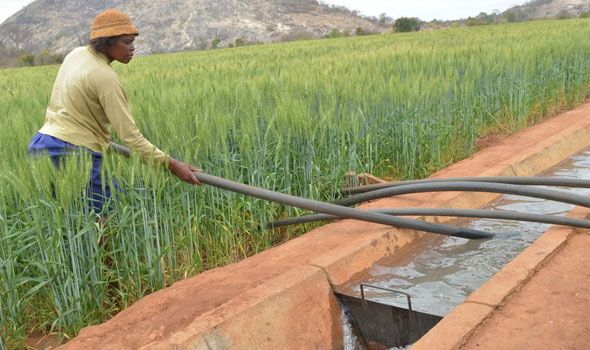Govt to expand irrigated area
THE Government intends to increase the area under irrigation, through the Accelerated Irrigation Programme, from 175 000 hectares to 250 000 ha, as part of measures to mitigate the negative impact of climate change on agricultural production and enhance Zimbabwe’s adaptation to global warming.
This was said by Mr Tendai Mutasa, a climate change scientist in the Ministry of Environment, Climate, Tourism, and Hospitality Industry, without specifying time frames.
Mr Mutasa said this while addressing a climate change adaptation stakeholder meeting organised by the Centre for Agriculture and Food Policy (CAFP) in Harare yesterday.
The meeting was meant to facilitate deliberations on the role of digital technologies in climate change adaptation for agriculture along the Zambezi River basin.
In order to scale up climate change adaptation strategies, the Government has been conducting cloud seeding, upgrading meteorological seismology as weather station networks in the country.
It has also implemented extensive adaptation strategies in low rainfall areas, funded by Green Climate Fund.
Zimbabwe has endured a number of droughts in recent years and this has presented major challenges to the agriculture-reliant livelihoods dotted across the country.
Addressing stakeholders at the workshop, Mr Mutasa said the Government had taken it upon itself to continuously increase the area under irrigation as a way to counter the detrimental effects of climate change.
“Climate change is real and I am sure you are aware that all socio-economic sectors are being affected. Let me quickly enumerate that as part of efforts to address adverse effects of climate change, the Government is conducting Accelerated Irrigation Rehabilitation Programme to minimise the negative impacts of uneven rainfall.
“This is to allow production throughout the year, the target is to increase area under irrigation to hectares above 250 000 from the current 175 000,” said Mr Mutasa.
Dr Greenwell Matchaya, from the International Water Management Institute (IWMI), said the intention was to advise decision-makers within and outside of the public sector, on how to use technologies to enhance climate change adaptation and improve agriculture productivity, particularly along the Zambezi River basin.
“The goal is to discuss the best ways to increase the use of digital technologies and opportunities that may be available for up-scaling the use of technology in climate adaptation.
“Our overall aim is to advise decision-makers within and outside of the public sector, on how to mainstream technologies in climate adaptation,” said Dr Matchaya.
He said the initiative was necessitated by the need to reduce the impact of persistent droughts, poverty and to improve resilience to climate change in the country.
Zimbabwe has experienced extreme temperatures of 0,9 degrees Celsius above the average between 1901 and 2012 while the number of hot days has increased since 1950.
According to the World Bank and United Nations Development Programme, the country has also been witnessing a decline in average rainfall by 5 percent since 1915.
Further, the country has seen increased frequency and length of dry spells during the rainy season, and the severity of these changes is projected to grow going forward.
Sustainable Development Goal (SDG) number 13 calls on governments across the globe to take urgent action to combat the effects of climate change and its impacts.-The Herald










